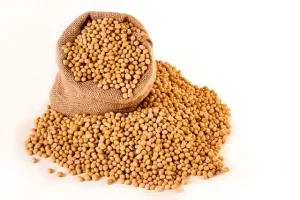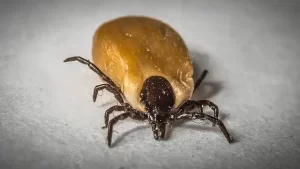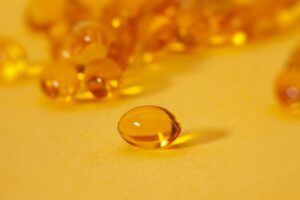Nature neuroscience: Preference for sugar stems from gut drive to brain
- Engineered Soybeans with Pig Protein: A Promising Alternative or Pandora’s Dish?
- Severe Fever with Thrombocytopenia Syndrome (SFTS): A Tick-Borne Threat with High Mortality
- Why Isolating Bananas Extends Their Shelf Life?
- This common vitamin benefits the brain and prevents cognitive decline
- New report reveals Nestlé adding sugar to infant formula sold in poor countries
- Did Cloud Seeding Unleash a Deluge in Dubai?
Nature neuroscience: Preference for sugar stems from gut drive to brain
- Red Yeast Rice Scare Grips Japan: Over 114 Hospitalized and 5 Deaths
- Long COVID Brain Fog: Blood-Brain Barrier Damage and Persistent Inflammation
- FDA has mandated a top-level black box warning for all marketed CAR-T therapies
- Can people with high blood pressure eat peanuts?
- What is the difference between dopamine and dobutamine?
- How long can the patient live after heart stent surgery?
Nature neuroscience: Preference for sugar stems from gut drive to brain
With economic development and improvement of living standards, obesity has become a major public health problem worldwide .
According to the World Health Organization (WHO) , nearly 2 billion people are overweight or obese in the world. From 1975 to 2016, the global obesity rate has nearly tripled, and the number of deaths caused by overweight or obesity is as high as 2.8 million each year.
In order to reduce the health effects of sugar, more and more people are starting to consume artificial sweeteners instead of real sugars.
These artificial sweeteners have the sweetness of sugar, but are usually not converted by the body and therefore do not produce calories. It is considered to be a healthy way of eating and has gained popularity in recent years.
However, while real sugar and artificial sweeteners produce similar sweetness, people still prefer real sugar, which also makes it difficult for artificial sweeteners to shake people’s sugar cravings.
As early as 20 years ago, scientists discovered their sweet taste receptors in mice.
However, it was surprising that even if the genes for these sweet receptors were knocked out, the mice were still able to distinguish between real sugar and real sugar.
Artificial sweeteners. A new study has found the answer to this puzzle – the upper part of the gut, behind the stomach, holds the secret to distinguishing between real sugar and artificial sweeteners.
On January 13, 2022, researchers from Duke University in the United States published a research paper titled: The preference for sugar over sweetener depends on a gut sensor cell in the journal Nature Neuroscience .
The study shows that taste buds often struggle to tell the difference between real sugar and artificial sweeteners, but gut cells can easily identify and relay the difference to the brain within milliseconds.
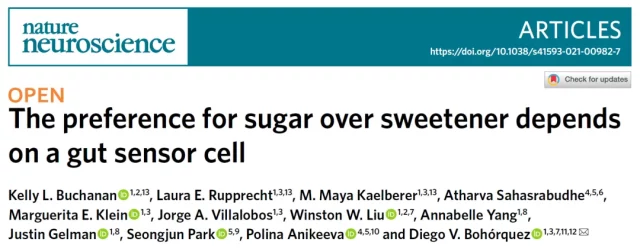
Both sugar and artificial sweeteners produce sweetness, but both humans and animals prefer real sugar .
Even mice lacking taste receptors were able to distinguish between sugar and artificial sweeteners.
Previously, the research team discovered a cell type in intestinal cells, Neuropod Cells , which are distributed throughout the lining of the duodenum, and which produce fast-acting hormones in addition to relatively slow hormone signals.
Neurotransmitter signals, which communicate with neurons through fast synaptic connections, transmit the sensed sugar signal to the vagus nerve within milliseconds and then to the brain.
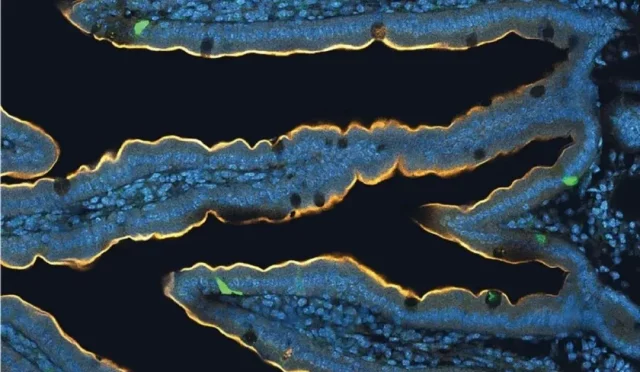 Relatively rare Neuropod Cells (green fluorescence) in the intestinal epithelium
Relatively rare Neuropod Cells (green fluorescence) in the intestinal epithelium
Using laboratory-grown organoids derived from mouse and human cells to represent the small intestine and duodenum, the research team showed that real sugar stimulated Neuropod cells to release glutamate as a neurotransmitter, while artificial sweeteners It stimulates the release of ATP as a neurotransmitter .
The research team then used optogenetics (Optogenetics) to further study live mice by turning Neuropod cells on or off in the guts of live mice to confirm whether their preference for real sugar is driven by gut cells drive.
With optogenetic triggering of Neuropod cells to shut down, the mice lost their preference for true sugar performance.
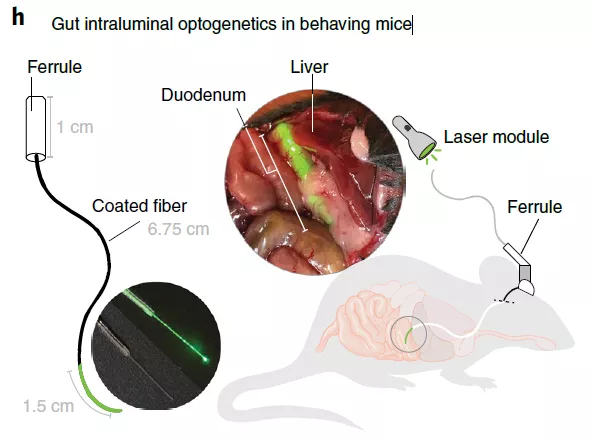
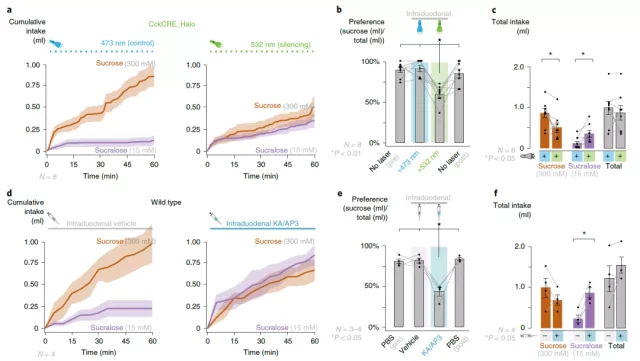
Optogenetic experiments show that sugar preference in mice depends on Neuropod cells in the duodenum
These experimental results tell us that Neuropod cells are sensory cells of the nervous system , just as taste buds on the tongue help us perceive taste, and retinal cone cells in the eyes help us see color.
Neuropod cells can sense the difference between real sugar and artificial sweeteners, and then release different neurotransmitters into different cells of the vagus nerve, allowing the brain to perceive which is sugar and which is artificial sweetener.
Humans have a natural craving for sugar, and many struggle with it for their health. This research sheds light on the gut’s important role in sugar perception and cravings, and why artificial sweeteners have difficulty curbing sugar cravings.
The research team also showed that the gut can directly talk through the Neuropod cells to change eating behavior .
The behavior of mice could be altered by altering N europod cells in the gut so that they no longer crave sugar. In the long run, these findings could lead to entirely new ways of treating the disease.
In addition, in April 2020, Nature published a study from Columbia University in the United States , which found that the sugar sensory pathway from the gut to the brain after ingestion is crucial for the formation of sugar preferences , and revealed artificial sweeteners.
The neural basis of the different effects of flavors and sugars on behavior and the basic circuit of the effect of sugar on appetite.

These studies all tell us that the gut is critical for sugar preference and that this pathway is independent of the sweet taste receptors (located on the tip of the tongue) .
These studies also remind us that even if artificial sweeteners deceive the taste buds, they cannot deceive the gut, and it is impossible to quit milk tea and cola, which turns out to be the pot of the gut.
Reference :
https://www.nature.com/articles/s41593-021-00982-7 _
https://www.nature.com/articles/s41586-020-2199-7
Nature neuroscience: Preference for sugar stems from gut drive to brain
(source:internet, reference only)
Disclaimer of medicaltrend.org
Important Note: The information provided is for informational purposes only and should not be considered as medical advice.
